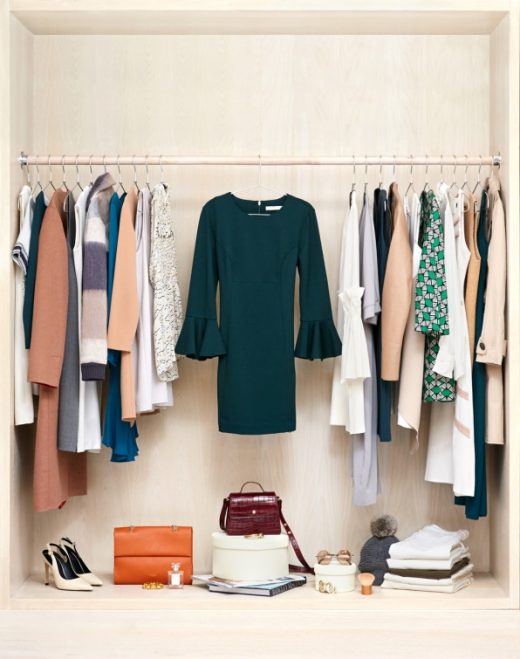Rent more than the runway: Why soon, you won’t own any clothes at all
One day soon, you’re going to open your closet in the morning and find a sparse array of clothes: a few T-shirts, perhaps, a couple of jeans, and maybe one dress. But don’t feel sad for your future self: You’ll still have plenty of chic outfits—you’ll just be renting them.
Wardrobe-for-rent giant Rent the Runway hit big when it launched in 2009, becoming the go-to startup for folks looking to renting a tux or ballgown for a wedding or other special event. But now, the powerhouse brand is looking to go beyond high-end designer duds.
The platform, which has 10 million members, is now working with 39 different brands across the fashion spectrum—including J.Crew, Levi’s, and Club Monaco—to incorporate their inventory and help them become rental businesses of their own.
“This opens up an entirely new revenue stream for these brands,” says cofounder and CEO Jennifer Hyman.
The brand has been slowly moving toward this approach for a few years. In 2016, the company launched Unlimited, which allows women to keep four pieces of clothing at any one time for $159 a month. And last year, it launched Update, a subscription service that allows you to rent four pieces for 30 days at $89 a month. A full 85% of customers who have a subscription use it weekly. And to make returns even more convenient, Rent the Runway recently partnered with WeWork to create drop boxes in 15 locations.
“The world of subscription use cases has multiplied in ways that we never even anticipated,” says Maureen Sullivan, Rent the Runway’s COO. “The average subscriber is using Rent the Runway clothing 120 days a year, for work, for weekends, for casual outings. This is a woman who sees Rent the Runway as kind of the ultimate life hack.”
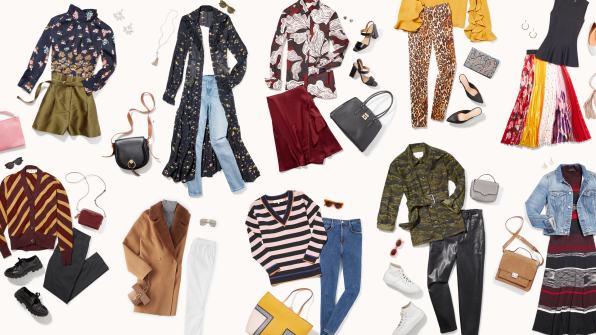
New revenue streams
Until now, Rent the Runway owned the inventory on its website, like any other retailer might, buying directly from more than 500 different fashion labels. The difference now is that it will let partner brands use its platform to rent out as much of their inventory as they choose. Going forward, Sullivan says that between 15% and 25% of Rent the Runway’s inventory will come directly from outside brands.
Many brands have signed on, including Hunter (best known for its Wellington boots), The North Face, denim brand DL1961, Rebecca Minkoff, LK Bennett, Marchesa, and Levi’s. “Some of these brands weren’t on our site before,” Hyman says. “They were attracted to this new platform.”
Sullivan says that women’s clothing preferences when it comes to renting are very different than buying. For instance, the most popular colors in retail tend to be neutrals, like blacks, blues, and grays, because customers want to get as much use out of them as possible. But when renting, women tend to be more interested in fashion-forward pieces. “It’s print, it’s color, it’s embellishment,” says Sullivan. “It’s basically the things that don’t feel rational to own. This is exciting for our platform partners because this is inventory that isn’t necessary performing well for them in a traditional sales environment.”
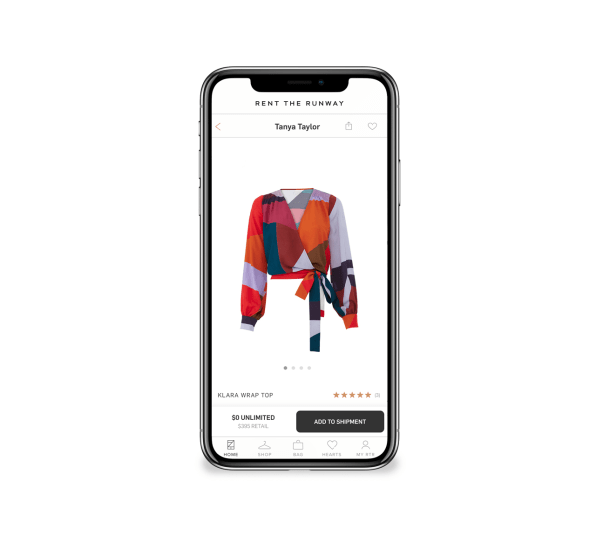
The platform opens up a world of possibilities, including new revenue streams, says Hyman. Many brands I spoke with it say it also serves as a form of marketing to a new consumer base. “It allows the consumer the opportunity to try out products that otherwise they may have hesitated to purchase,” says Alasdhair Willis, Hunter’s creative director. “For Hunter, it’s the perfect opportunity for us to further drive awareness of and engagement with our expanded footwear, outerwear, and accessories.”
Expanding brand reach
Levi’s also believes this will help expand the brand’s reach.
“Like shoes and underwear, jeans are unfortunately a product where fit really matters,” says Brady Stewart, Levi Strauss &. Co’s senior vice president of digital for the Americas. “This makes it hard to buy jeans online, but renting is a whole other story. We think this will let women try out a pair of jeans, and if they love them, they can go on to buy them.”
But the most valuable asset, Sullivan says, is the treasure trove of data to which Levi’s will now have access.
For instance, Rent the Runway will share details about which styles are more popular than others, as well as who is renting each item. J.Crew believes this could help with its future product development.
“We’re also really interested in new insights around style preferences and product feedback to support future design and development, and inform decisions we make to better serve J.Crew customers,” says Aaron Rose, the brand’s chief of emerging business.
When a customer returns an item she has rented, she answers a “happiness survey” that gathers very specific information, including how many times she wore it and how well it fit.
“We’re giving our platform partners insight about what inventory is going to be most accessible in rental,” Sullivan says. “Our incentives are aligned. If a clothing item is in demand, if it’s being worn, and if it has a high wear rate, it will drive significant revenue, which we can share with our partners.”
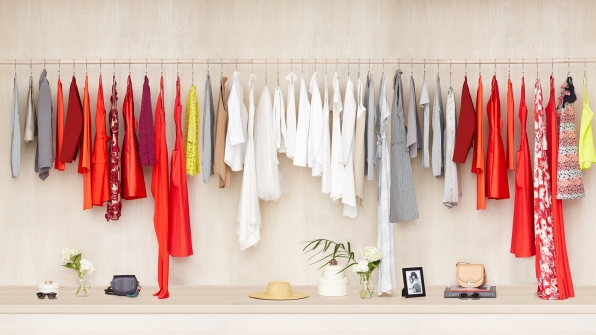
The logistics of renting
Over the last nine years, Rent the Runway has perfected all the complex logistics of renting: From its impressive dry-cleaning service that turns around thousands of clothes a day, to its database that identifies little details like when a piece of clothing is going to come back in stock. Now, all of these brands will have access to this complex technology.
Rent the Runway isn’t the only company trying to help other fashion brands ease into the world of clothing rental. A new platform called Caastle launched earlier this year to help brands convert a portion of their inventory into rental.
Caastle’s founder Christine Hunsicker launched a clothing subscription brand called Gwynnie Bee in 2011, where women could receive an unlimited number of new outfits every month for $69. But Hunsicker’s plan was always to refine her rental infrastructure to make it available to other brands. As of this year, brands like Ann Tayler and New York & Co. now have rental options that are entirely powered by Caastle.
One key difference is that Caastle allows brands to keep their rental business on their own websites and control of the customer’s renting and buying experience. In other words, it feels like you are renting directly from Ann Taylor. Rent the Runway, on the other hand, brings all of the different brands onto its website, so when customers search for say, jeans, Levi’s will appear alongside J.Crew’s.
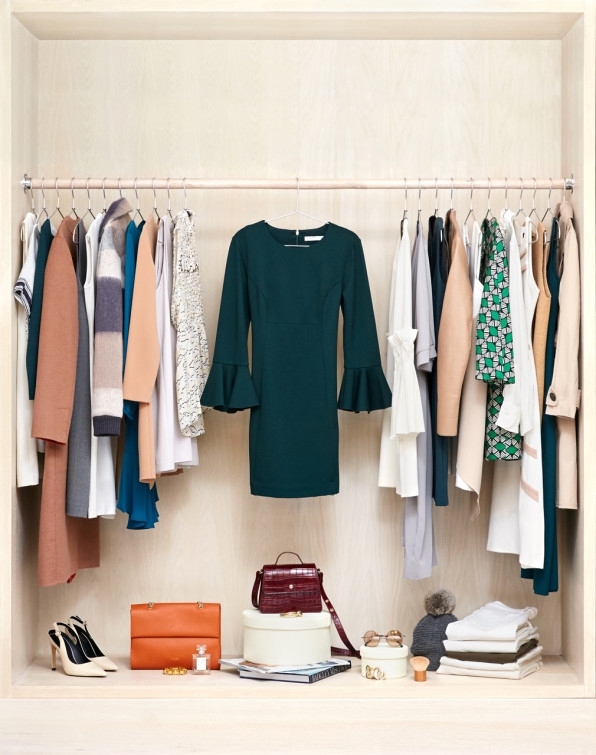
If consumers begin to consider rental a viable alternative to buying, the implications for the entire fashion industry could be vast. For one thing, renting could be a more sustainable alternative to fast fashion, which has had a very negative impact on the environment.
The average American woman generates 82 pounds of textile waste every year, the vast majority of which ends up in a landfill. And 80% of the clothes in a woman’s closet are only worn three times or less. Rather than buying an item that is in style, only to wear it a few times before throwing it out, renting would ensure that each item is worn many times by many users. And over time, this could also allow brands to make less products and make money each time someone rents the item.
Environmental implications
Renting has environmental impact as well. Clothes need to be shipped back and forth around the country, and require multiple rounds of dry cleaning. Hyman says that Rent the Runway has worked to ensure that its cleaning methods are as green and nontoxic as possible. (Hunsicker says that Caastle also uses eco-friendly cleaning in its warehouses.)
On net, it appears as if renting is better for the earth than buying. “The rise of fast fashion has meant that more women are buying higher quantity, lower quality, which is contributing to the pollution problem,” Sullivan says. “Our hope is that we’re helping to change consumer behavior so people realize they don’t need to own all this stuff. Whether you pay $10 for something at H&M, or $50 at Zara, or $200 on it at Saks, if you’re only wearing that one, two, three times a year, it’s not that great of an investment.”
The question now is whether consumers are ready to ditch buying for renting. It will likely take years for the average person to change their behavior, since we’re so used to owning our clothes. But fashion brands are expecting this shift to happen, especially since they have seen other industries change drastically as a result of the sharing economy.
“We’ve seen the shift take place across industries outside of fashion, especially in large cities, and I don’t imagine we’ll see the retail industry behave any differently,” says Francis Pierrel, CEO of Club Monaco, whose products will be on the Rent the Runway platform shortly. “Rather than replacing an economy of ownership, I think we’ll see more brands reconciling the integration of both shopping approaches as we move forward.”
Hyman is optimistic that things will change quicker than we know. For one thing, it didn’t take long for us to replace buying movies and music for platforms like Netflix and Spotify. And she says that the company has noticed that an increasing number of customers are joining its subscription program. “I think this switch to renting clothes is happening quicker than most people realize,” Hyman says. “Women seem really excited about the possibility of a closet in the cloud.”
Fast Company , Read Full Story
(56)

